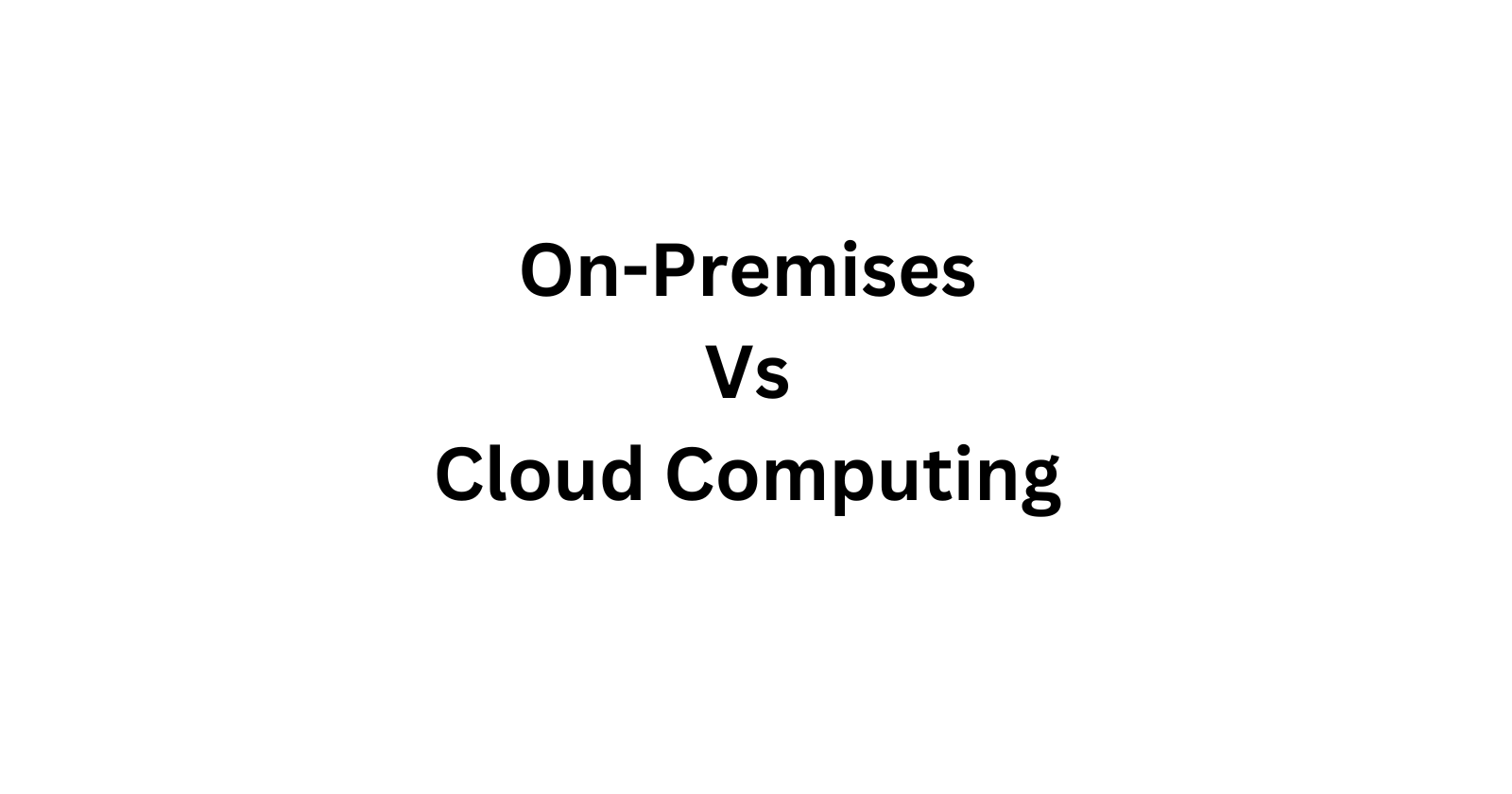On-Premises Vs Cloud Computing Tutorial
 Amrutha D
Amrutha D
What is Cloud Computing?
Cloud computing is a technology that allows users to access a shared pool of computing resources, including servers, storage, applications, and services, over the Internet. Rather than owning and maintaining their infrastructure, users can rent access to these resources from cloud service providers, paying only for what they use.
What is On-premise?
On-premise refers to the traditional model of storing and processing data on physical servers and equipment located within a company's facilities. This means that a company has to purchase, set up, and maintain its servers and equipment.
On-premise Vs Cloud Computing:
On-premise computing refers to the traditional model of storing and processing data on physical servers and equipment located within a company's facilities. Cloud computing, on the other hand, refers to the delivery of computing resources and services over the Internet on a pay-as-you-go basis. The main difference between on-premise and cloud computing is the location and management of the infrastructure. On-premise computing requires a company to purchase, set up, and maintain its servers and equipment, while cloud computing allows a company to rent or lease access to servers and other resources from a third-party provider.
Coding Examples:
The provided coding examples illustrate the difference between on-premise and cloud computing in the database connection. In the on-premise example, the database connection is made using a "localhost" address, which implies that the database is located within the company's facilities. In the cloud computing example, the connection is made using a "cloud-server-address," indicating that the database is hosted remotely on a cloud server.
Advantages & Disadvantages:
On-premise computing and cloud computing each have their unique advantages and disadvantages. On-premise computing provides full control over infrastructure, making it suitable for businesses with strict security and compliance requirements. However, it comes with high upfront costs and limited scalability. Cloud computing, on the other hand, offers scalability and flexibility, allowing businesses to adjust resources as needed, and it frees businesses from managing infrastructure. However, it may have shared responsibility for security and compliance and limited control over infrastructure.
Conclusion:
In conclusion, on-premise computing and cloud computing are distinct models for delivering and managing computing resources. Businesses should carefully evaluate their specific needs and goals to decide which model best suits their requirements.
Subscribe to my newsletter
Read articles from Amrutha D directly inside your inbox. Subscribe to the newsletter, and don't miss out.
Written by

Amrutha D
Amrutha D
Gen AI Video Creator | Gen AIOps | AIOps Cloud DevOps Engineer | Let's Connect & share Technical knowledge & grow together in Technologies Everyday..